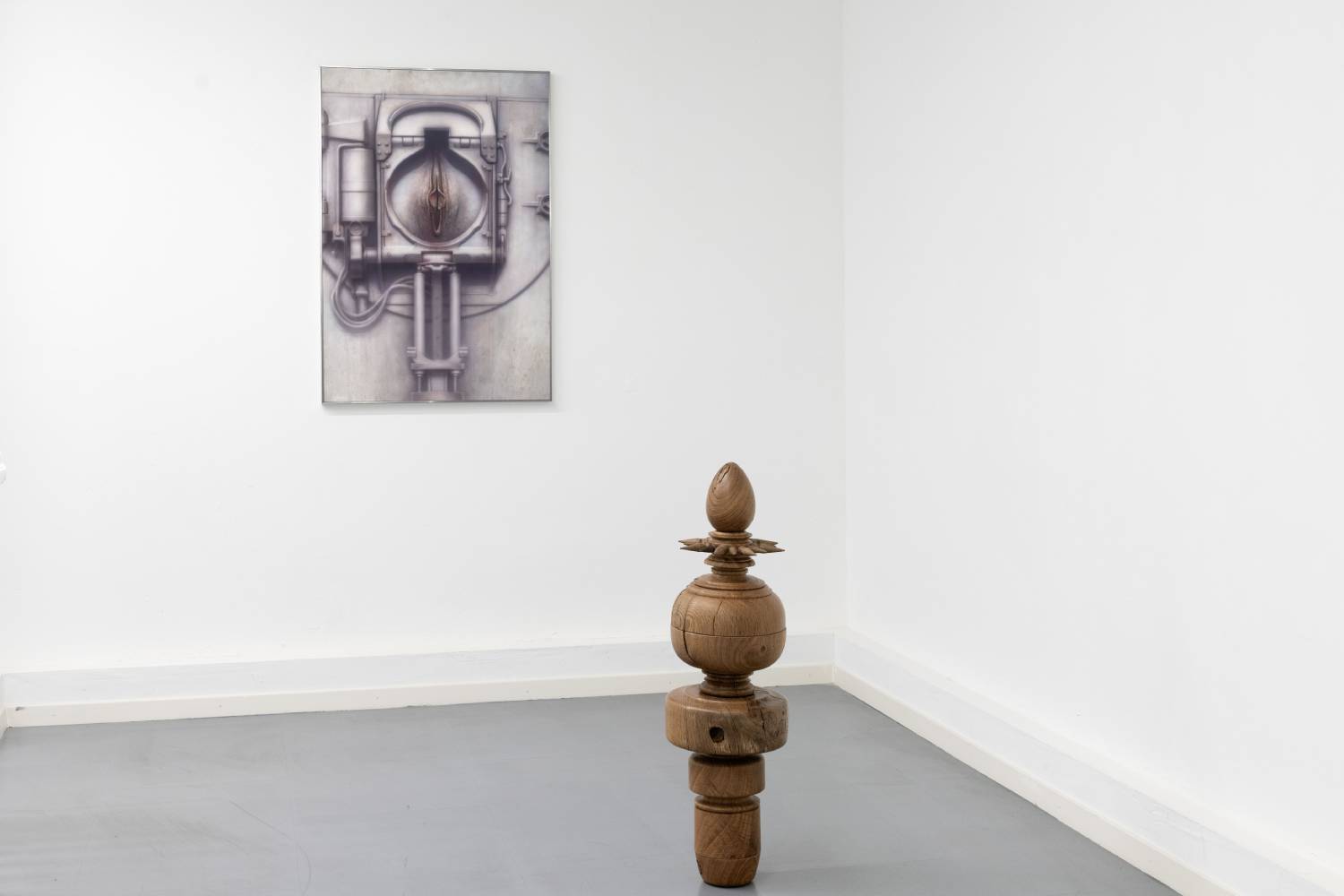
“Honey” is the latest show on view at Blue Velvet Projects. The exhibition revolves around themes of pleasure, desire and power, accompanied by an exhibition text by Anya Harrison.
Take a piece of my heart, honey. Except when flipped on its head, the heart is a spade, a spike, a lance, a gash in the flesh, a gaping wound pried open. It’s not the heart of steel but the glove that fits, turned in on itself, eyes telescoping inwards towards its innards. Or maybe it’s both. For Bataille, mesmerised by a photo, which he first came across in 1925, of a convicted man undergoing Chinese lingchi aka Death by a Thousand Cuts, bone peeking through thinning carcass, ecstasy could never be independent of the most agonising pain. Perhaps this is also what Lyotard was getting at: forget transgression, “we must go immediately to the very limits of cruelty, perform the dissection of polymorphous perversion, spread out the immense membrane of the libidinal ‘body’…”, turn it into a creased Moebius skin of “bone, epithelium […] charged atmospheres, swords, glass cases…”. He might have later disavowed the ideas of his livre méchant, but it sticks. Here, all is a matter of feeling and texture, a vertiginous plunge on the Loop-the-Loop, down down down into the abysmal psychogeography of spaces, crooks and surfaces hellbent on their own disintegration. Like bees to a honeypot.
It was in the 1930s that Hans Bellmer made the decision to permanently renounce all economically useful activity and instead dedicate himself to assembling The Doll, the disjointed acrobatics of its bulbous rolls and stacked folds obsessively reimagined in endless configurations and corporal corruptions. The mind’s eye peeking behind dark recesses to reach “the dizzying heights of passion”, in its wake stirring up anatomies of desire. Captured in forensic-style photographs or barely discernible in the layered stains and marks of his drawings, hybrid limbs, machines and the natural elements commingle in an excessive outpouring of obsessive sensibilities. The way the viscous folds of a bloody-red drapery pool and liquefy in a Sibylle Ruppert painting while in the same instance translucent skin splits at the seams, no longer able to contain steroid-pumped muscles. Or the dead-end static “passages” of HR Giger, boxed-in spaces of his own macabre nightmares; clamped, wired surfaces framing a fleshy incision, a sticky black hole that makes no distinction between the too-curious and unsuspecting.
Just as there is no way out, there is no way forward either. The ergonomic moulds of Anna Uddenberg’s sculptures entice, but these pseudo-architectural structures offer only one set of instructions: on your knees, ass up, head down, stay still. Cocooned into submission by a deluxe fucking machine. Still too is Marie Matusz, all petrified materials, shards and spikes, superimposed reflections on the mirrored surfaces of a plexiglass coffin. Instead of Snow White, it encases spindly joints that form the would-be limbs of an exoskeleton. Elsewhere, sharpened metal is caught in the act as it tears through plaster epidermis or, in the case of Julian-Jakob Kneer, shoots out of a grinning skull, itself a trompe l’oeil, no longer bone but flattened jigsaw pixels. A smooth wooden surface soon impales the hand that strokes it, the ornament’s crime answered with corporal mortification. Meanwhile, in Rob Kulisek’s surrealist-tinged photomontages, flesh is stripped off the bone or is simply the waxy finish of a mannequin’s torso. All around layers peel off, give way to raw matter, joints and orifices both violent and violated. The sting of pain indiscernible from sickly sweetness.
– Anya Harrison
